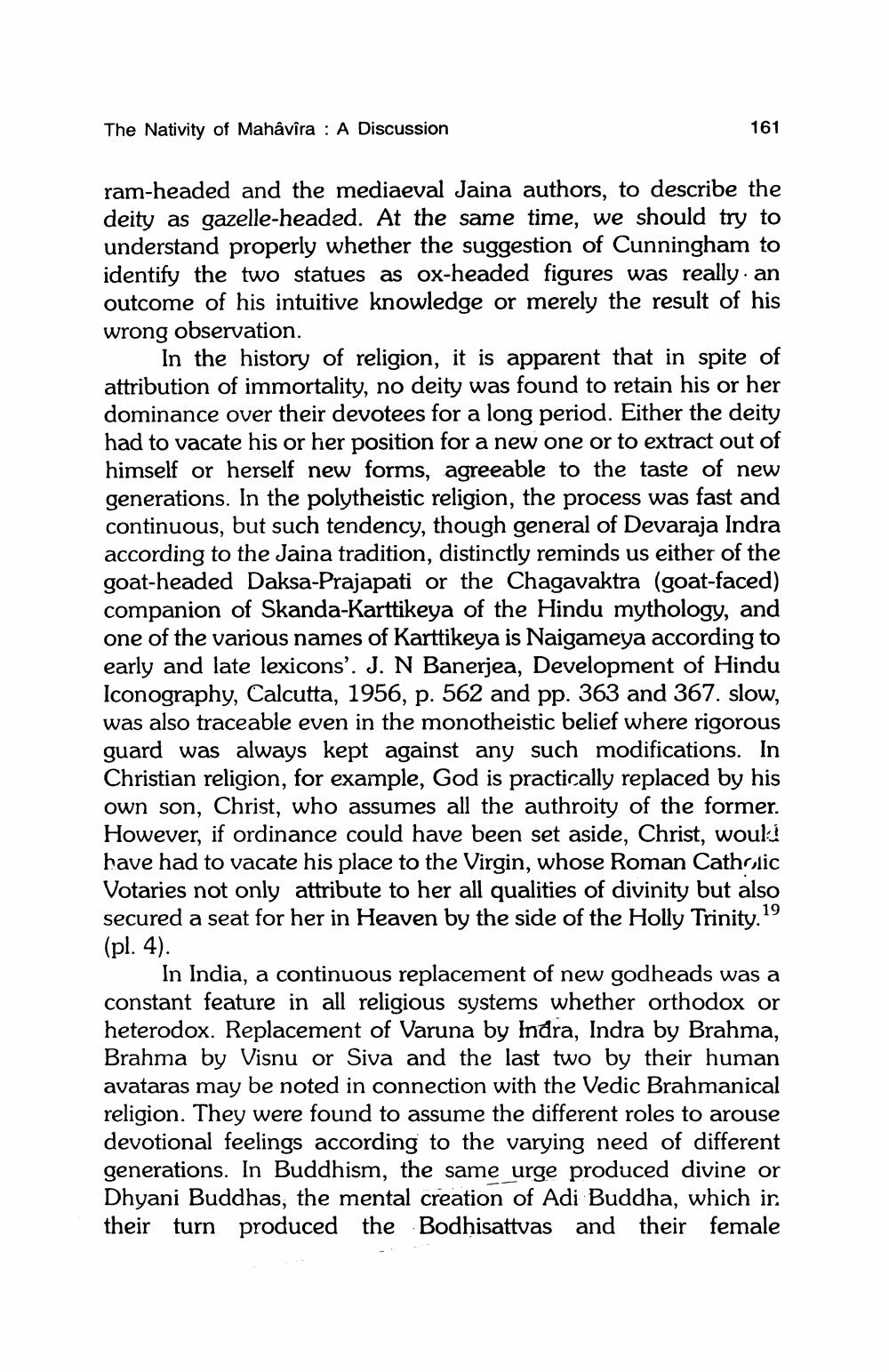________________
The Nativity of Mahavira : A Discussion
161
ram-headed and the mediaeval Jaina authors, to describe the deity as gazelle-headed. At the same time, we should try to understand properly whether the suggestion of Cunningham to identify the two statues as ox-headed figures was really. an outcome of his intuitive knowledge or merely the result of his wrong observation.
In the history of religion, it is apparent that in spite of attribution of immortality, no deity was found to retain his or her dominance over their devotees for a long period. Either the deity had to vacate his or her position for a new one or to extract out of himself or herself new forms, agreeable to the taste of new generations. In the polytheistic religion, the process was fast and continuous, but such tendency, though general of Devaraja Indra according to the Jaina tradition, distinctly reminds us either of the goat-headed Daksa-Prajapati or the Chagavaktra (goat-faced) companion of Skanda-Karttikeya of the Hindu mythology, and one of the various names of Karttikeya is Naigameya according to early and late lexicons'. J. N Banerjea, Development of Hindu Iconography, Calcutta, 1956, p. 562 and pp. 363 and 367. slow, was also traceable even in the monotheistic belief where rigorous guard was always kept against any such modifications. In Christian religion, for example, God is practically replaced by his own son, Christ, who assumes all the authroity of the former. However, if ordinance could have been set aside, Christ, would have had to vacate his place to the Virgin, whose Roman Catholic Votaries not only attribute to her all qualities of divinity but also secured a seat for her in Heaven by the side of the Holly Trinity. 19 (pl. 4).
In India, a continuous replacement of new godheads was a constant feature in all religious systems whether orthodox or heterodox. Replacement of Varuna by Indra, Indra by Brahma, Brahma by Visnu or Siva and the last two by their human avataras may be noted in connection with the Vedic Brahmanical religion. They were found to assume the different roles to arouse devotional feelings according to the varying need of different generations. In Buddhism, the same urge produced divine or Dhyani Buddhas, the mental creation of Adi Buddha, which ir. their turn produced the Bodhisattvas and their female




